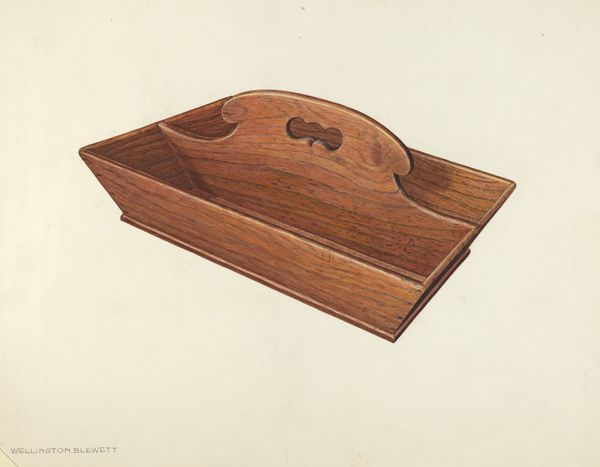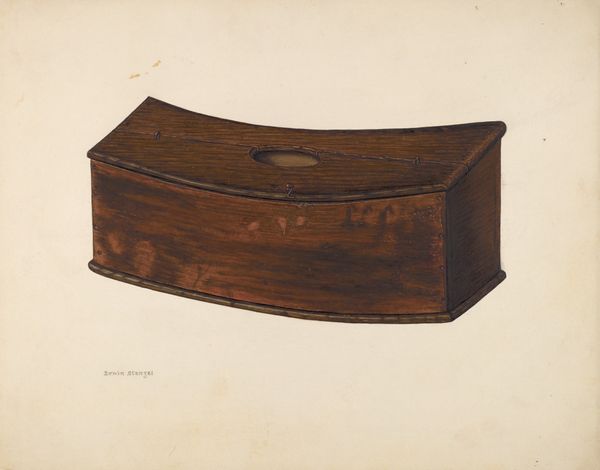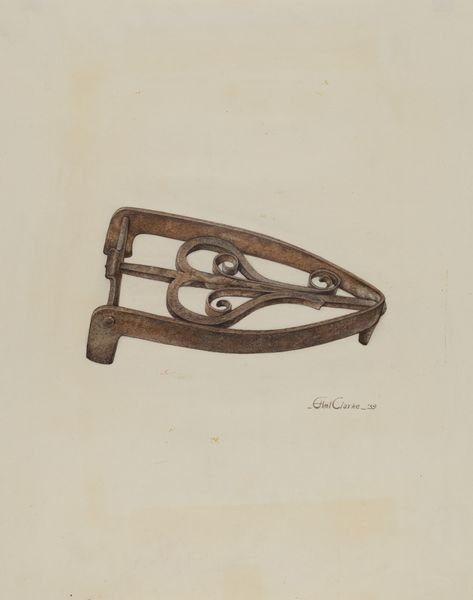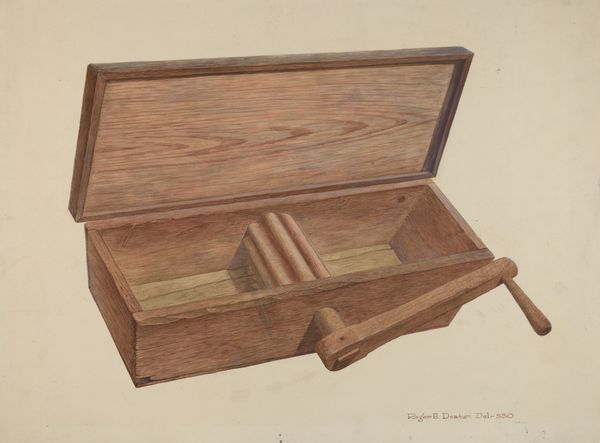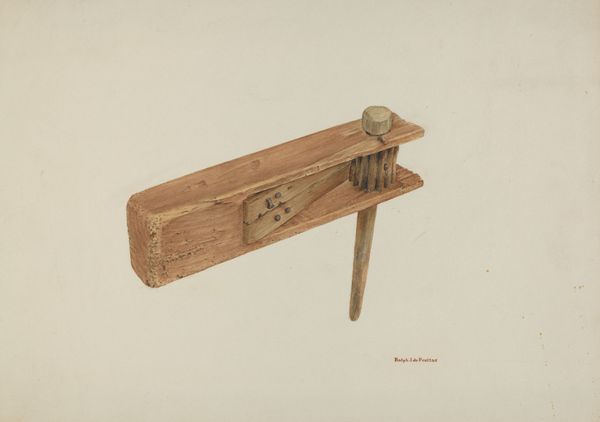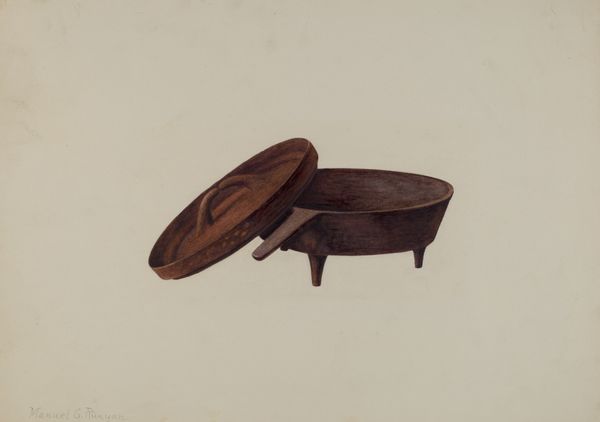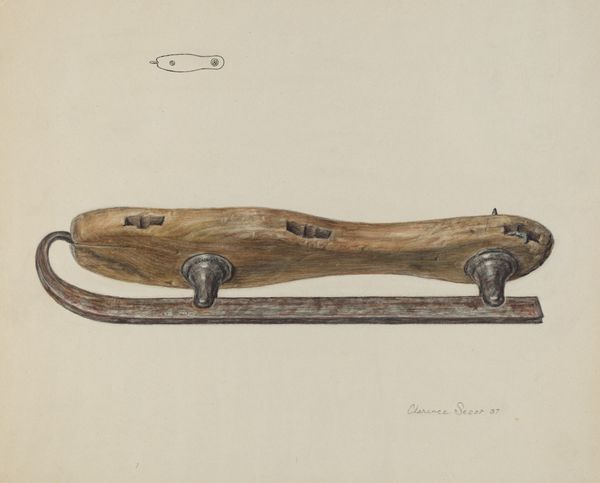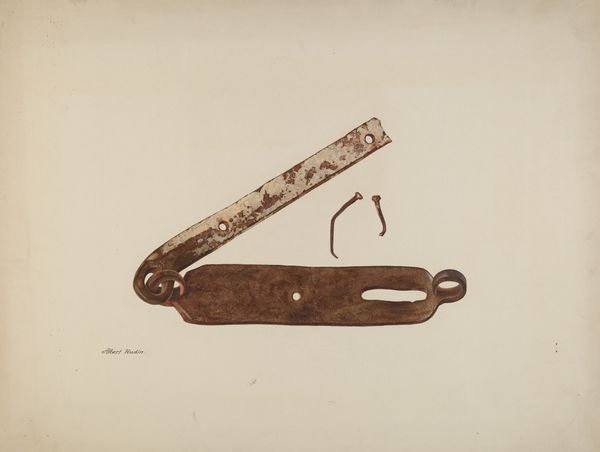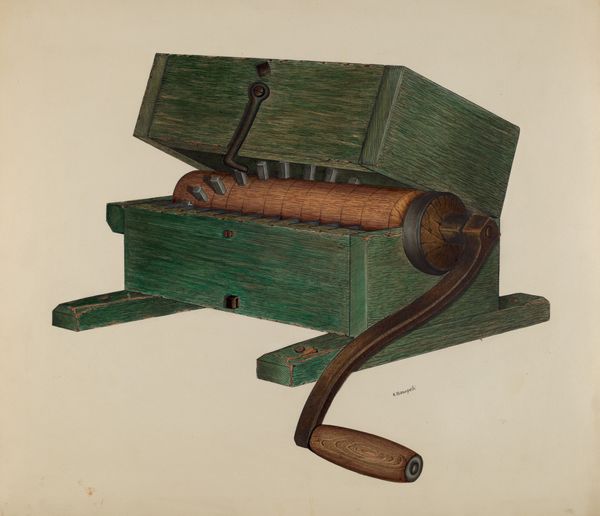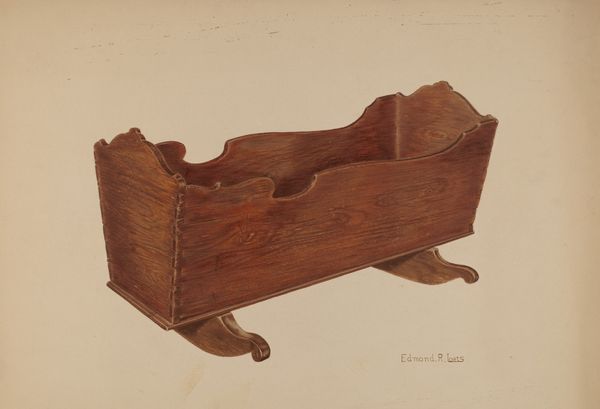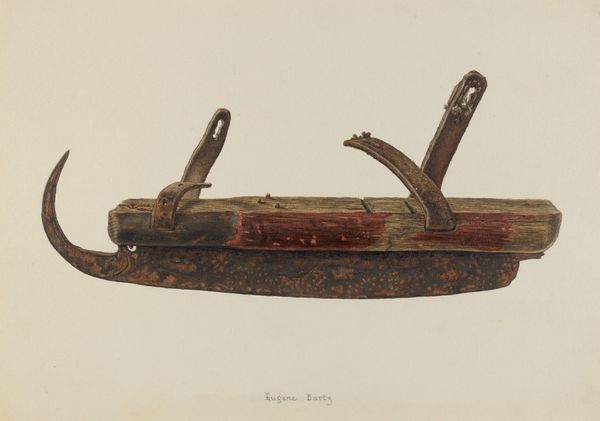
drawing, painting, watercolor
#
drawing
#
painting
#
watercolor
#
realism
Dimensions: overall: 26.5 x 35.5 cm (10 7/16 x 14 in.) Original IAD Object: 14 1/2" long; 3 1/2" high; 3" wide
Copyright: National Gallery of Art: CC0 1.0
Curator: Alright, let's dive in. Before us we have "Bootjack," a watercolor and drawing piece by Dolores Haupt, circa 1938. Editor: It feels immediately… nostalgic. It's simple, utilitarian, but that brown is really giving me sepia tones and memories of Grandma’s house. Curator: That's interesting. Can you tell me why nostalgic comes to your mind? Editor: It is the browns, truly! I also note a kind of muted practicality. It’s realism, yes, but it's infused with the kind of everyday dignity we often overlook, but this makes me wonder, what can an artifact of boot removal tell us about access, class, and labor? Curator: Right! In Haupt’s era, access to the kind of labor that required sturdy boots was not evenly distributed, especially across gender or racial lines. And look at the tool itself—meticulously rendered, almost elevated. The artist paid incredible attention to every detail, rendering with almost loving focus this item that literally symbolizes hard work. Editor: It makes me think of farmworkers, construction, heavy industry. These boots, they aren’t pristine fashion statements. I want to situate them within conversations around identity, around manual labor. It's fascinating that a tool usually associated with removal and rest… is made the focal point of something approaching reverence. Curator: It is reverential. I am compelled by the watercolor medium itself – not glamorous oil paints or monumental bronze – instead the subtle delicacy here reminds me of the quiet, persistent strength in simple objects that can often speak volumes about human experience. The simplicity can make it easy to disregard or, or make us see something really interesting and subtle at play in a different light. Editor: And look how she makes it sculptural with the coloring – these almost glowing inner curves – and consider the historical context; we must think about access, but more importantly who lacked that very access. This humble tool points us to vital intersectional conversations. Curator: Definitely food for thought, isn't it? This ordinary bootjack gives you pause, makes you question the invisible histories embedded in the things we use, and discard every day. Editor: Absolutely. We need to not simply notice the painting, but critically explore its significance beyond aesthetics, allowing it to echo against contemporary understandings of work, privilege, and social justice.
Comments
No comments
Be the first to comment and join the conversation on the ultimate creative platform.

